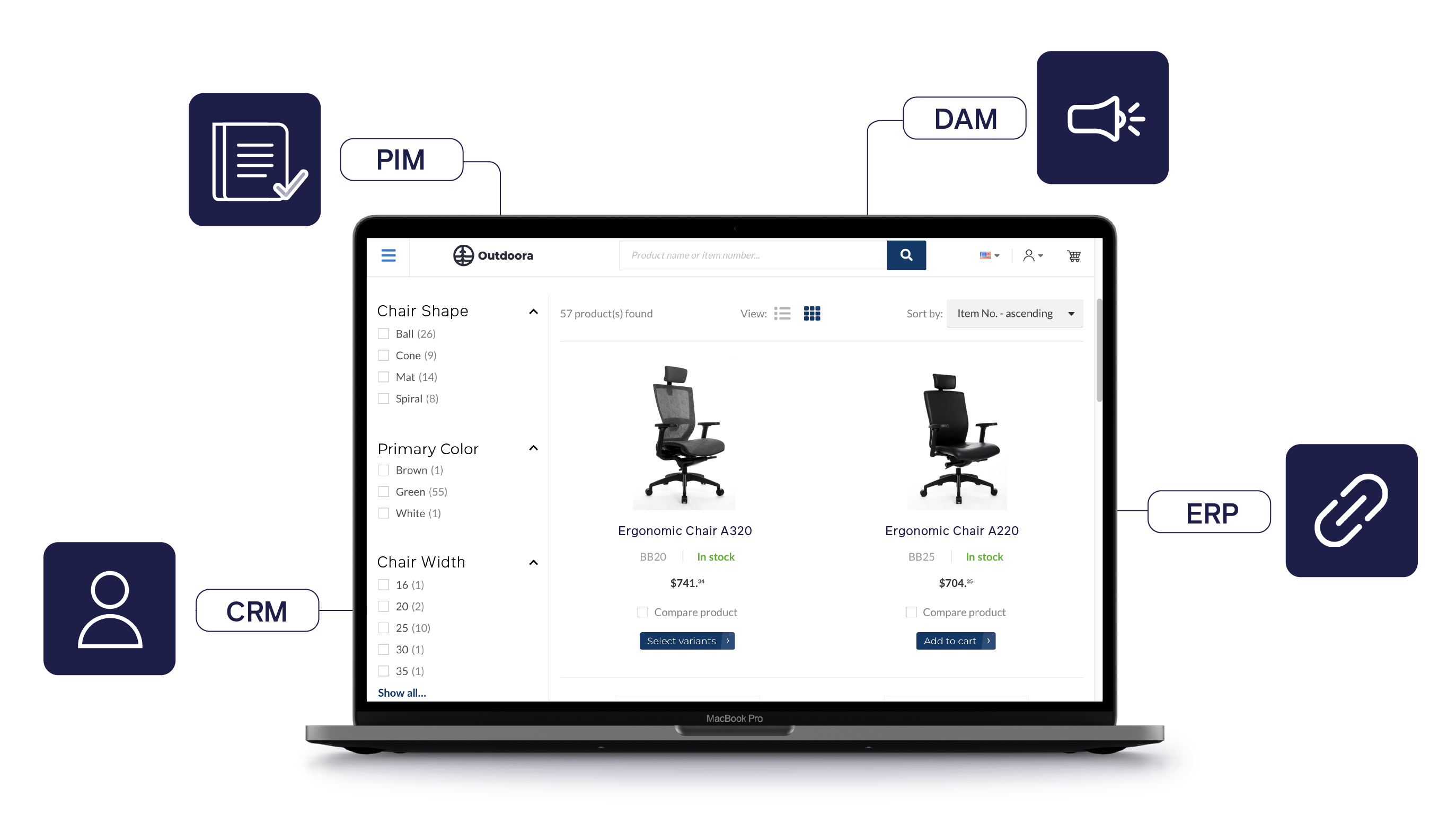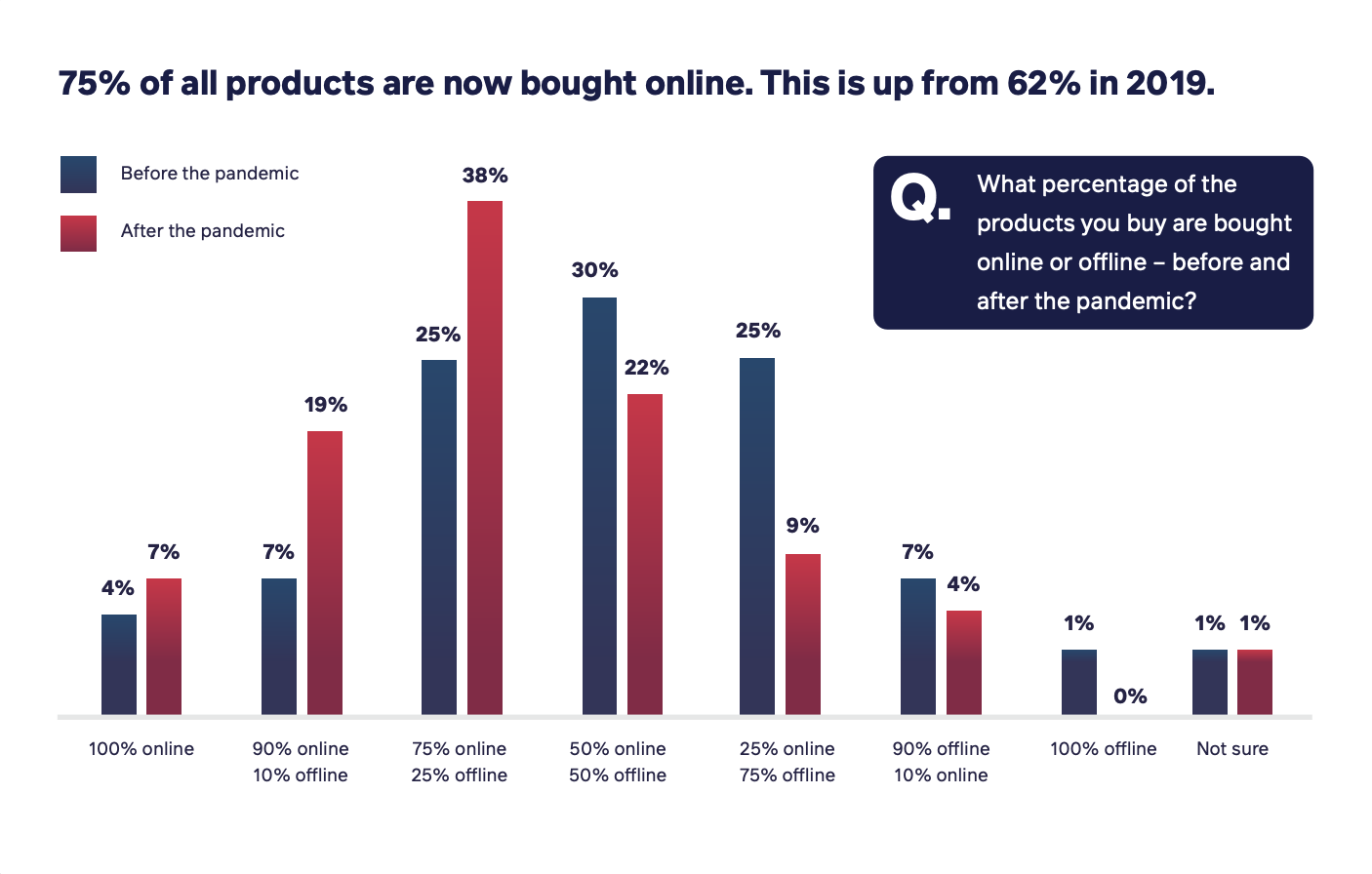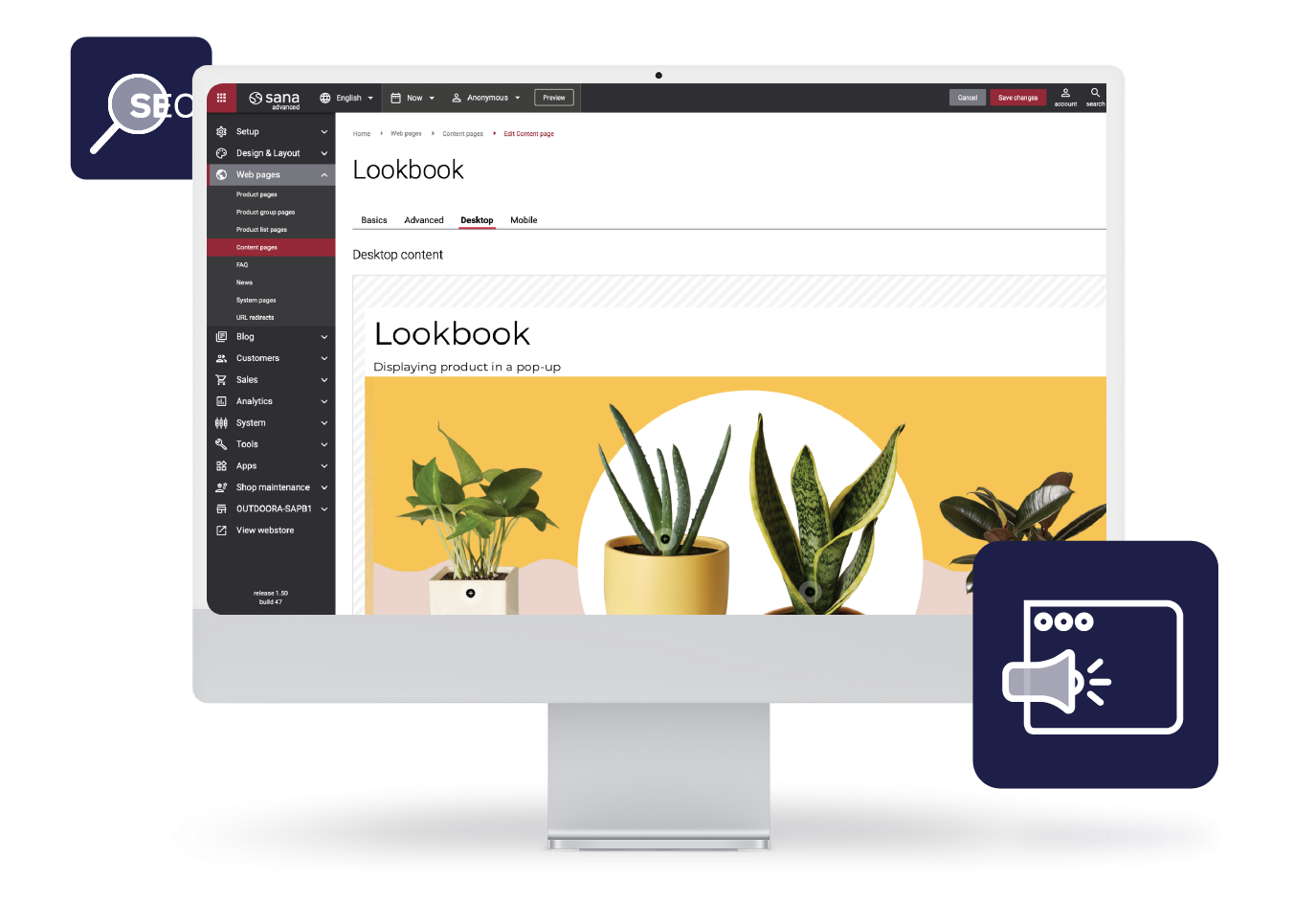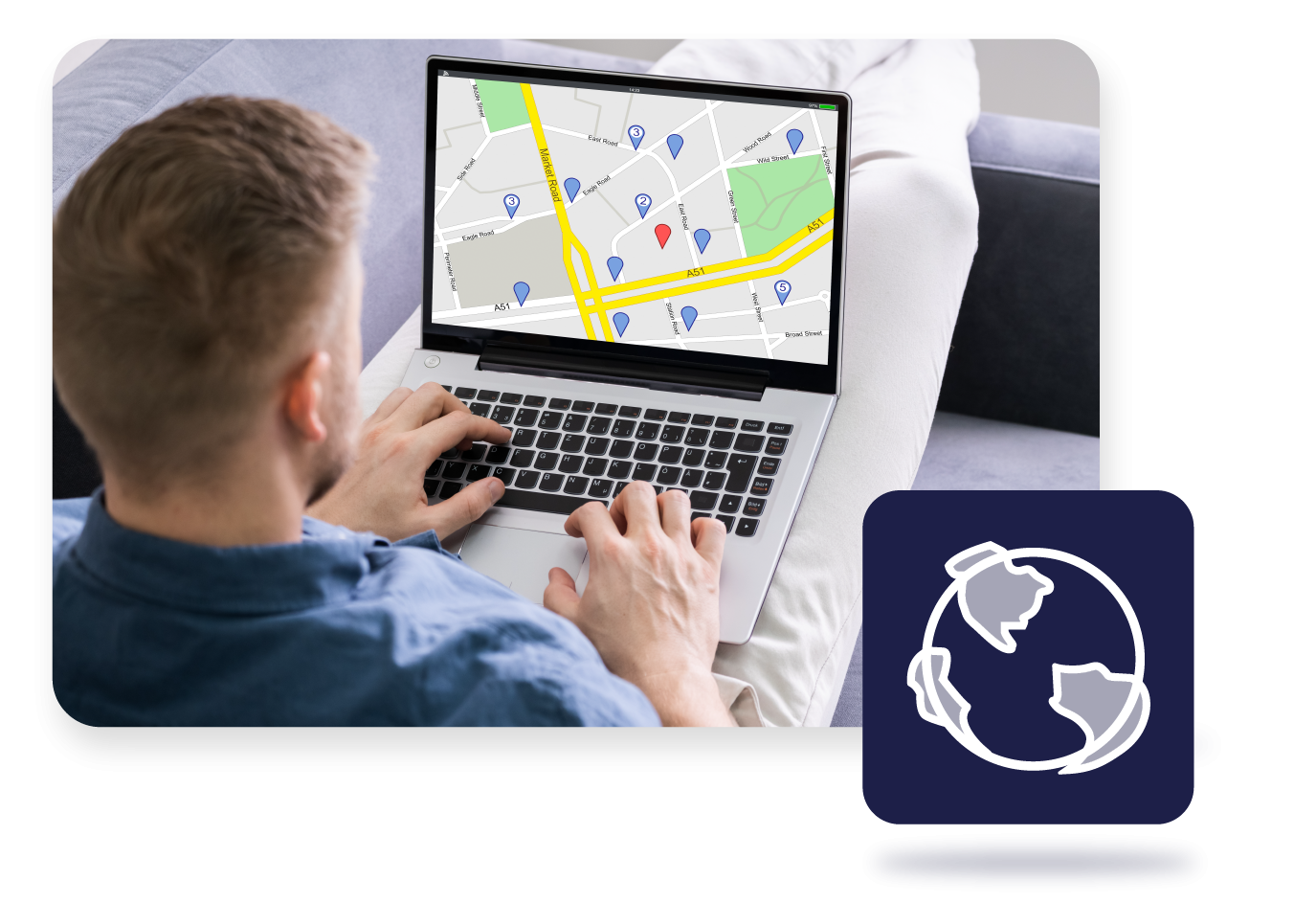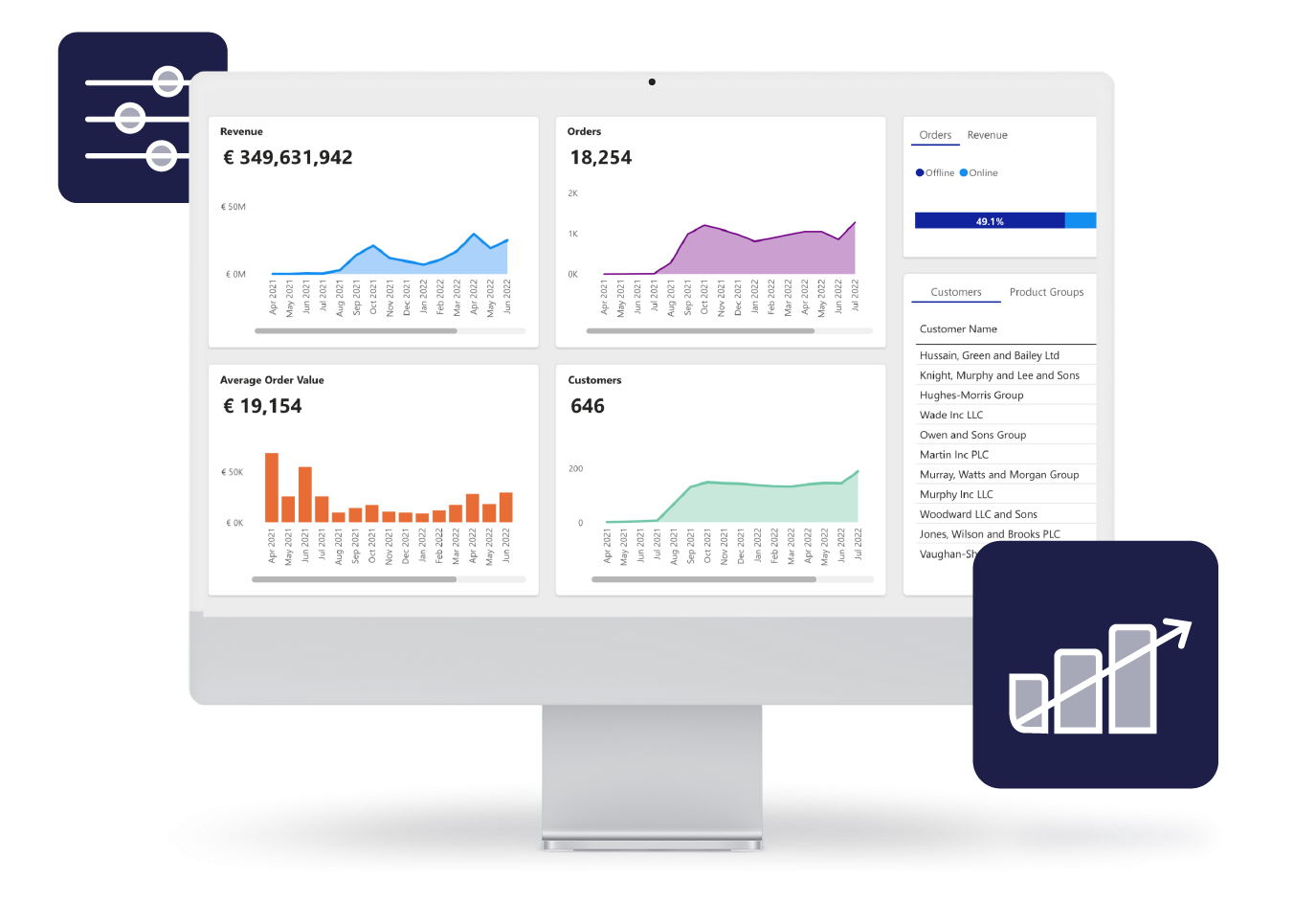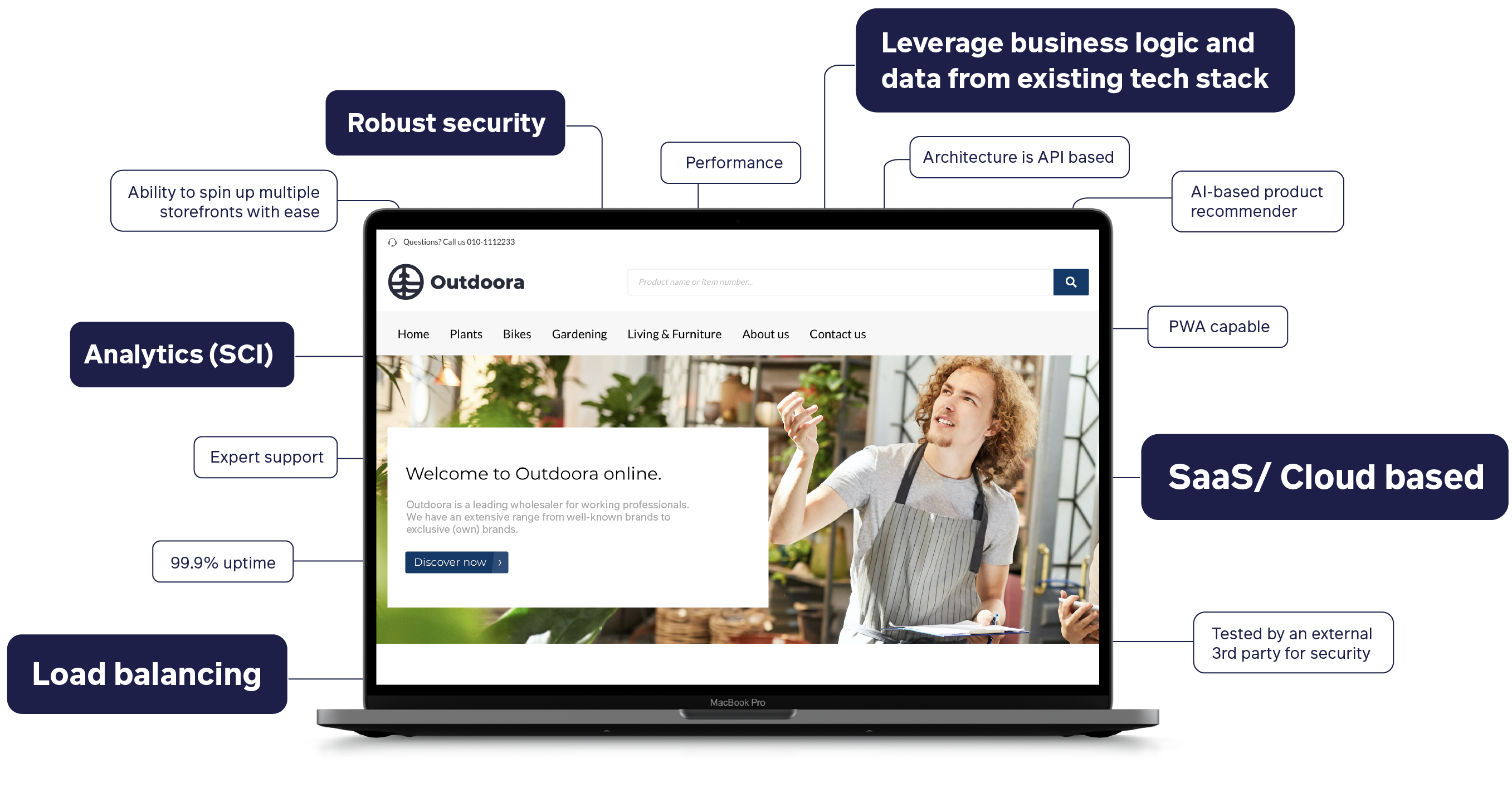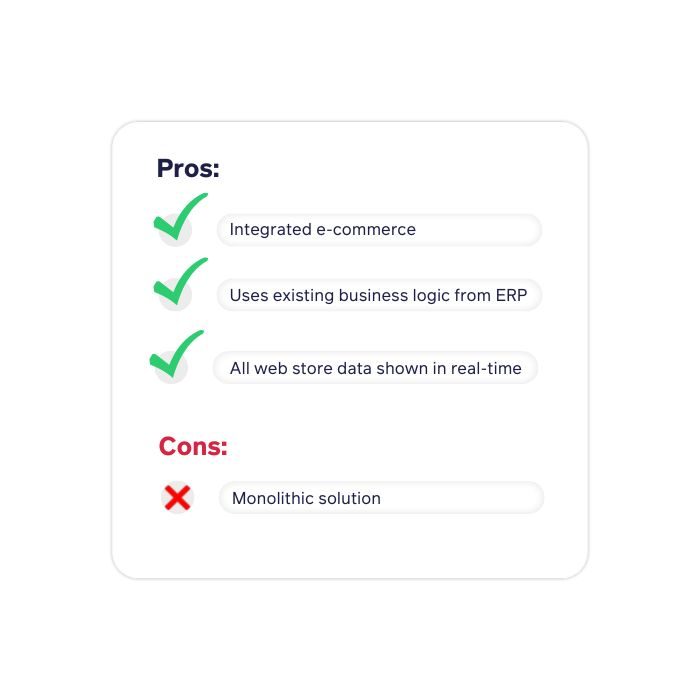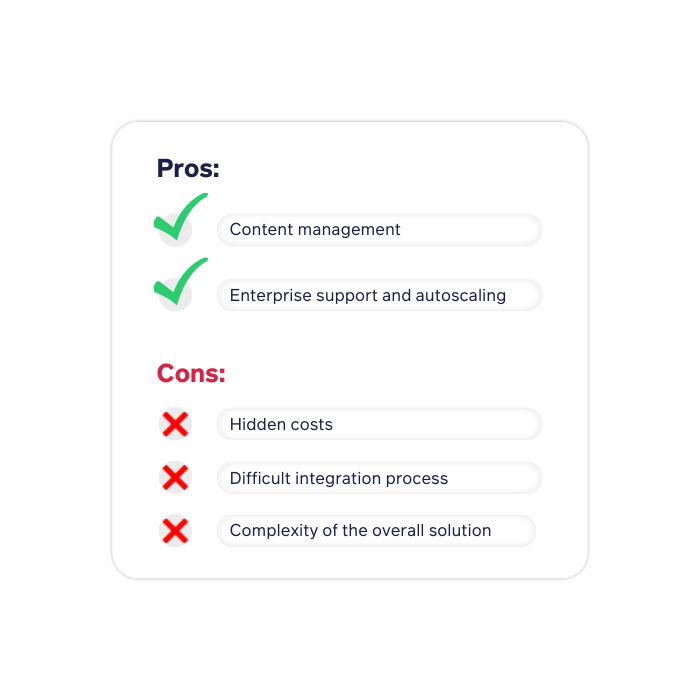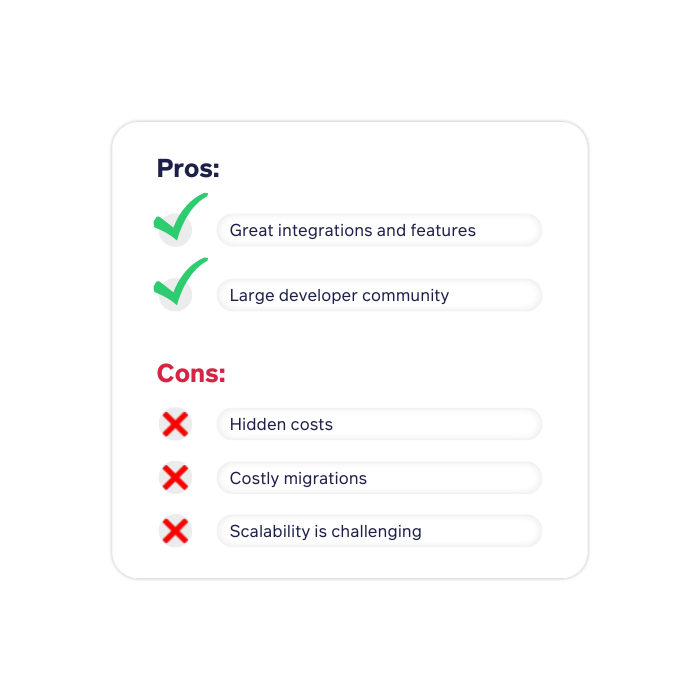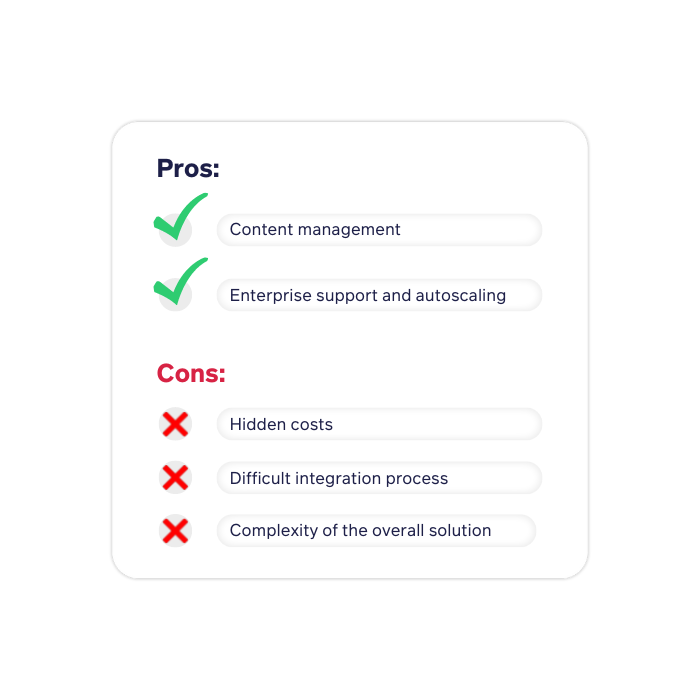Step 5: What else to consider
For an enterprise business to be successful, it requires several systems to function together perfectly. New technologies and generational changes have led to a blur between the expectations of B2C vs. B2B customers.
The differentiation is no longer as black and white as it was a few years ago. Now in B2B buying, we are looking at professional buyers who value customer experience and satisfaction just as much as they do in B2C. This means that to live up to these new expectations your website needs to be available 24/7; payments must be processed, and shipments must be sent out quickly and accurately.
Based on the survey responses in our B2B trust index, the top challenges which B2B customers now identify in the online buying process include; proper delivery and tracking (44%), relationships with suppliers (39%), and visibility of product features (34%). Additionally, new tools need to be implemented for marketing, sales, and e-commerce teams. All this needs to function seamlessly with the current tech stack in place.
To make things a little easier check out some other factors you may not have considered below:
Website performance
Your website needs to be able to handle spikes in traffic without slowing down or becoming unresponsive. This is important not only for customers, but also for your website’s bottom line – if customers can’t get to your site, they may not return.
Amount of website traffic
If your customer base is expanding and your website traffic is increasing, it may be time to consider an upgrade to your current platform. Doing so could ensure that your online store can handle the influx of visitors and scale with your projected growth. This could help you ensure that your business continues to succeed.
Secure payment and data
Protecting your and your customers’ data should always be top of mind and choosing the right platform is critical since the wrong decision can be costly for your business.
A self-hosted platform offers enhanced visibility of data and knowledge of data security, but a SaaS platform ensures security and PCI compliance for a fixed fee.
Mobile optimization and SEO
SEO is important for any e-commerce business looking to scale up and generate more revenue. Enterprise platforms that come with built-in SEO features make the task easier.
There are many different e-commerce solutions available and each has its own set of requirements for SEO. For example, some solutions require industry-specific keyword research, XML sitemaps, mobile optimization, meta title, meta description, URL redirect management, and more.
The rise in mobile commerce has increased customers’ expectations of mobile site performance and user experience. Moreover, according to Google, mobile optimization has become one of the most important ranking factors for websites. Thus, making mobile optimization a prerequisite for selecting the ideal enterprise e-commerce platform.

